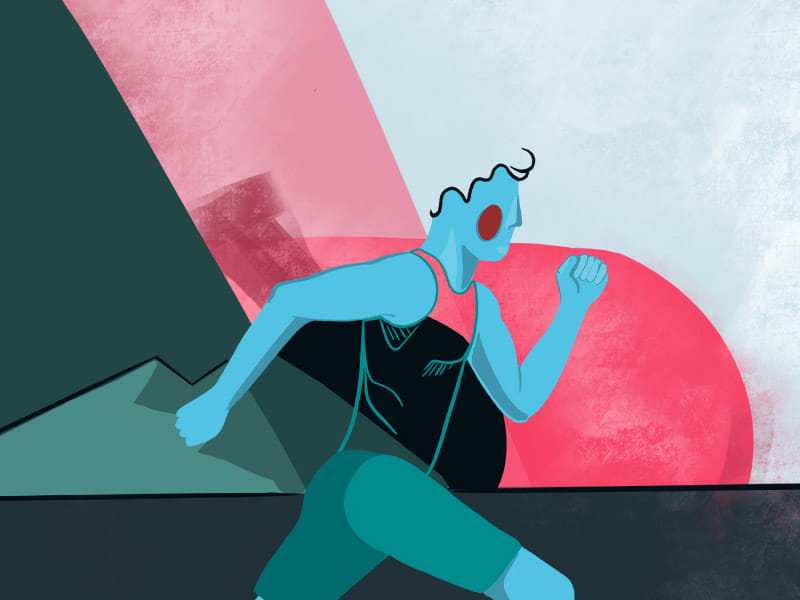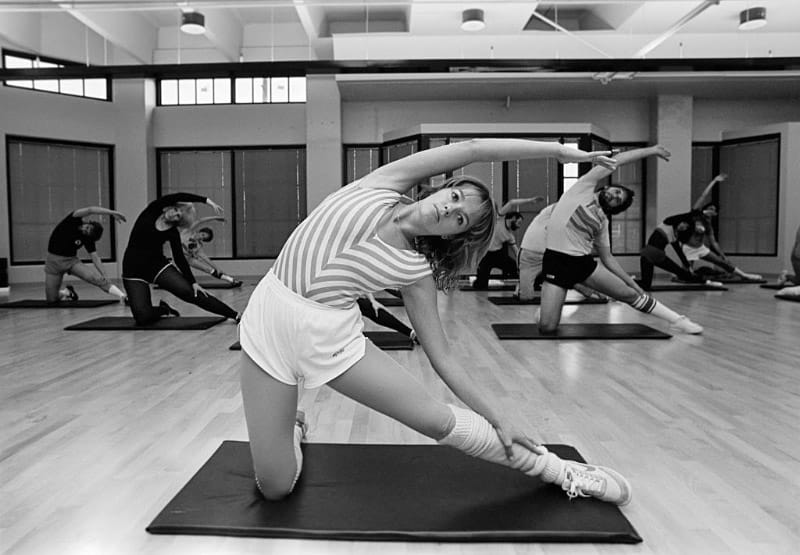
A century ago, people threw medicine balls and did calisthenics to stay fit. Then came the hula hoop, vibrating belts and aerobics. People sweated to the oldies with Richard Simmons and felt the burn with Jane Fonda, before dancing their way into Latin-inspired cardio workouts or joining a high-intensity fitness program. During the pandemic, exercise bicycling boomed.
How people exercise changes with each new trend, but the idea that physical activity is key to good health is more than a passing fad. Even the ancient Greeks – namely Herodicus, considered the father of sports medicine, and Hippocrates, the father of modern medicine – were convinced exercise was key, though they couldn’t agree on how strenuous it should be.
That question wouldn’t be resolved for thousands of years. And as science continues to evolve, the answer may change yet again.
What won’t change is that staying active benefits health in myriad ways – including lowering the risk for heart attacks, strokes, dementia and several types of cancer, boosting mental health and potentially reversing Type 2 diabetes.
“There is an abundance of evidence that being physically active is associated with most health outcomes,” said Dr. Bethany Barone Gibbs, chair of the department of epidemiology and biostatistics at West Virginia University in Morgantown. “In fact, there are very few outcomes that being physically active does not improve.”
Engineering activity out of our lives
It wasn’t always so difficult to keep moving. People did it because they had to.
“One hundred years ago, people’s lives were a lot harder, so there was a lot of physical activity built into their lives,” Gibbs said. Though automobile ownership was becoming more common, it wasn’t yet the norm. Conveniences such as washing machines, spin dryers and vacuum cleaners were just beginning to hit the market.

“People had to walk to the store, they did a lot of manual housework and farm work,” Gibbs said. “There was a lot more activity involved in keeping yourself alive. People were looking for ways to do less. Now, physical activity is something you need to add back into your life.”
As cars proliferated and electric appliances reduced the amount of manual labor people had to do, “we got to a point where we weren’t so physically active,” Gibbs said. By the 1950s, “some people were not active at all. It then became apparent that maybe people who were more active were healthier. But there was no data to back that up. Nobody had thought of measuring physical activity, so it was an untapped scientific question.”
Finding the data to back it up
Scottish epidemiologist Dr. Jerry Morris was the first to look into how physical activity might be linked to heart health. He hypothesized that people in physically active jobs would have lower rates of heart disease than those who were inactive at work. To prove this, in the early 1950s he compared heart disease and mortality rates among conductors and drivers on double-decker buses, trams and trolleys in London and found drivers, who were sitting all day, had twice the cardiac mortality rate of conductors, who were moving around.
Shortly after Morris published his research, American epidemiologist Dr. Ralph Paffenbarger Jr. moved the needle on physical activity research by finding a way to measure how much people were getting. He developed a questionnaire that proved reliable in assessing the link between physical activity levels and the development of a range of conditions, including heart disease, stroke, Type 2 diabetes, high blood pressure, depression and longevity.
It was a far cry from being able to pinpoint how much or how strenuously people should move – something researchers were ultimately able to do with the advent of wearable devices that track a person’s movements all day – but it gave researchers a place to start, Gibbs said.
“Self-report questionnaires aren’t perfect, but they distinguish the very active from not-active people,” Gibbs said.
By the 1970s, the American Heart Association was beginning to promote increased physical activity for better cardiovascular health, but it wasn’t until a series of large, epidemiological studies in the 1980s and 1990s that evidence emerged surrounding the type and amount of activity needed to achieve health benefits. Cumulatively, studies showed even moderate-intensity activities such as walking and gardening could make a difference, leading to a 1995 U.S. surgeon general’s report encouraging people to engage in 30 to 45 minutes of moderate activity each day, and for those who were already doing so, to push themselves harder.

However, the report noted, 60% of U.S. adults failed to do so and 25% were hardly moving at all.
Guidelines emerge
As researchers continued to explore the question over the next three decades, federal guidelines for how much and how often people should move evolved, reflecting a deepening understanding of the way physical activity affects health and longevity.
In 2007, the American College of Sports Medicine, along with the American Medical Association and the U.S. surgeon general, launched a campaign dubbed Exercise is Medicine, calling for people to engage in 150 minutes of moderate-intensity exercise each week.
Current federal guidelines backed by the AHA continue to promote the 150-minute goal as a minimum. But they now reflect additional evidence suggesting people aim for up to 300 minutes per week of moderate-intensity exercise, or 75 to 150 minutes of vigorous-intensity exercise. Moderate-intensity muscle strengthening has been added as a twice-weekly goal, along with balance and fall prevention training for older adults. Children are advised to get at least one hour of moderate physical activity per day, with vigorous aerobic activity three times each week.
The guidelines also reflect a major new development in understanding the importance of movement: Even small amounts of activity throughout the day can make a difference.
A 2022 JAMA Internal Medicine study showed adding just 10 minutes of exercise per day may help people live longer. And a growing body of evidence suggests it’s not just how much people move but how much they sit that matters. The guidelines now discourage long periods of sedentary behavior, a recommendation bolstered by research that emerged from the COVID-19 pandemic lockdown, finding a benefit with even five minutes of movement at least once an hour.
‘Get off the couch’
“The big public health message is to just get off the couch,” said Dr. Damon Swift, an exercise physiologist and associate professor at the University of Virginia in Charlottesville.
“There is a misperception that you need to be a marathoner to get health benefits from exercise,” he said. “But really the benefits accrue much earlier than that. Once you start getting off the couch, there is a large decrease in risk as you go from being inactive to somewhat active. When you go from 150 to 300 minutes of physical activity, benefits still accrue but you get the most bang from your buck at the beginning.”
Since the pandemic, which accelerated the shift to a virtual existence, people are moving less than ever, Gibbs said. Just 1 in 4 men and 1 in 5 women and adolescents currently get the recommended amount of aerobic and muscle-strengthening exercise, the federal guidelines say.
“We have engineered physical activity out of our lives,” Gibbs said. “You can do all your shopping online, order your food online. If you wanted to spend all day not moving, you could do it. I really think that we have a tension between productivity and comfort and all the conveniences of life that allows us, if we don’t work at it, to not have physical activity as part of our lives at all.”
So whether it’s brisk walking, riding an exercise bike or pulling Jane Fonda aerobic videos off the shelf, in the end, it doesn’t really matter what you do to stay active, Swift said. As long as you do something.
“My recommendation to people is to do something you like doing and that’s easy for you to do,” Gibbs said. “We don’t need more evidence of whether physical activity is good for you or which type. We need more people to do it.”



